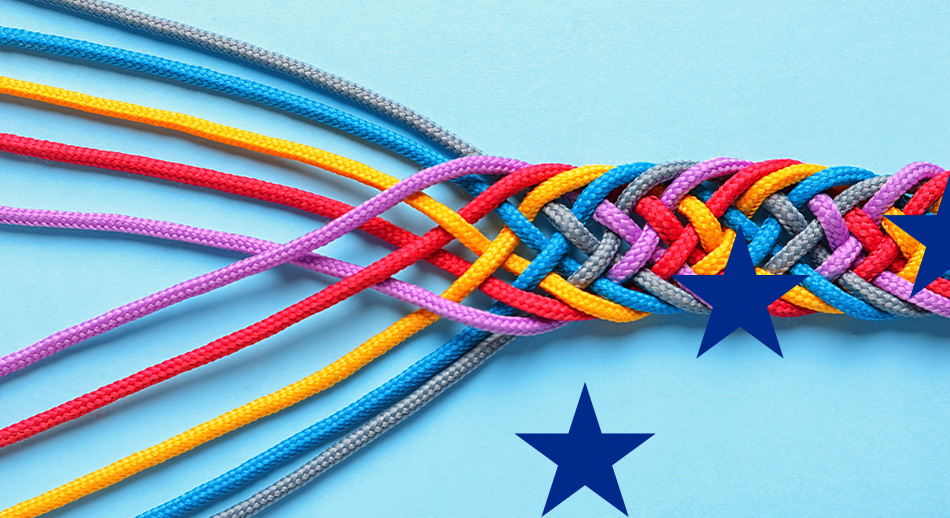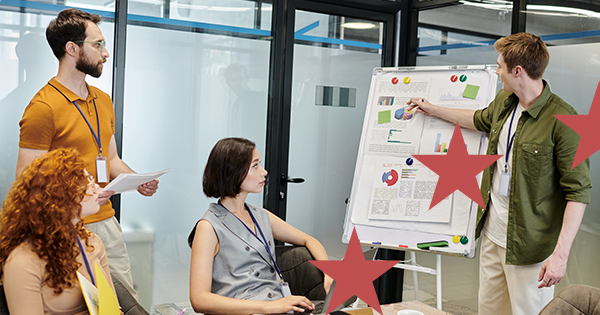At the dawn of a new programming period, the EU project designer is a much-needed professional figure. How does one become one?
Portrait of an EU project designer
We have already addressed this issue in two previous posts: one dedicated to the need for an EU project designer in project writing and one dedicated to the characteristics of the EU project designer profession. Let us try to take up some of the important elements, to better frame the sketch of an EU project designer and answer the question: how does one become one?
First, previous experience in writing EU projects is very important (and sought after) in an EU project designer: it can therefore be difficult to “break the ice” with first projects.
Second, the EU project designer must certainly have a good understanding of the procedures and funding sources specific to EU projects. He may have undertaken training or developed this skill through practice. It is not, however, a characteristic that makes it a “technician” capable of operating in a context-free manner.
In fact, the EU project designer is also (and perhaps above all) a person who knows and understands an organization’s sector, environment, capabilities, needs, and goals; and who on this basis “designs” a pilot action capable of broader impact, in terms of transforming the way (and the world!) in which the organization operates.
The EU project designer is also characterized by some key cross-cutting characteristics: versatility and ease in dealing with and explaining ideas, issues and approaches; excellent use of the written language; interpersonal and teamwork organization skills; and methodological and procedural rigor.
So how does one become an EU project designer?
As a consequence of this “sketch,” it is clear that there is no one way to find oneself working in europrojecting nor one way to be a europrojector. There are as many possible backgrounds and experiences as there are people who call themselves “Europrojectors.” Everyone has to find their own way to europlanning: let’s look together at some tips on how to look for it.
EU project designer “cultivates” an industry
The most frequent difficulty is “breaking the ice” with the first European projects.
For those who have taken an EU projects and funding course, it is often possible to test themselves with practical work at the conclusion of the course itself: this may be one of the criteria for choosing a useful and serious EU projects and funding course. In order to be able to “break the ice,” it is important that this work is not a school exercise but can be dropped into a concrete, known reality with which one has the opportunity to interact operationally.
Europlanning is never a context-free activity: knowledge of programs, procedures, design tools and funding sources is a means, not an end. Projects are born out of concrete ideas, and to come up with a good idea you need to know the field in which you are working.
We therefore recommend making the most of engagement in a particular area of predilection: whether it is attended for professional reasons or in the voluntary or associational sphere, it is normally the best terrain for putting the knowledge acquired in the field of europlanning to good use. And it is the best starting point at least to “break the ice.”
EU project designer keeps himself ready and up to date
A good project is very often the result of work done well, sparking new ideas, which in turn meet the right partners and end up in the right hands: those of a person who has the background to turn this into a European project.
It is therefore very important to be ready to “seize the day” by keeping abreast of programs and calls in your area of predilection, so that you are aware of the range of possibilities available to you once the opportunity or good idea presents itself.
However, as luck must go with it, it is also important to pursue continuous networking-or at the very least, to maintain an approach of maximum openness-to organizations working in the field and the best practices being developed there.
In this way, you have more elements to bring a good idea to life and then develop it into a project: which requires a great deal of awareness of the added value of the proposal and knowledge of the right partners to implement it.
EU project designer needs to develop soft skills
Europlanning is ultimately a “binder” of soft skills. To be ready and attractive as a Europrojector, it is very important to devote time and energy to developing these skills. What is it all about? The list is not unique, but they certainly have something to do with it:
- Editorial skills: ability to analyze in depth a given issue, related phenomena, and expected impacts; ability to do so clearly and precisely, with the necessary quantitative elements, but also with clarity and (why not) with a certain amount of passion, “storytelling,” vision of the proposal also as a “narrative strand.”
- Skills in the use of computer tools (word processing, spreadsheets, presentations, specific portals, and more): this, as well as the previous point, is by no means a given (at least, at the level of quality required to come up with a good project)-as much as it may seem so;
- Formal (resource planning, time calculations, cost estimates) and informal (working effectively in a project team) organization skills;
- The skills of accurate, precise, formally and terminologically correct analysis of regulations and other legal and administrative texts: these are a basic element for the success of a project (or at least, for its non-success);
- Relational skills: since the work of an EU project designer also and above all consists of convincing, dragging and accompanying the organizations that entrust them with their projects.
Industry professionals
For those aiming to make europlanning a job “as such,” we also recommend researching and nurturing relationships and networking with agencies and consultant groups working in this area: good opportunities to try their hand may arise from these contacts.
In fact, our country manifests considerable needs in the field of “quality” europlanning: as evidenced, after all, by the data on the “absorption capacity” of EU funds. Not all requests that come from the various local organisations can be handled, or channeled in a correct and effective direction, or followed up with the necessary care. Consultants or agencies may be very interested in candidates, collaborators, or supportive colleagues who demonstrate skills in the required areas (the previous paragraph can help, can’t it?); and who perhaps have already “broken the ice” with some first projects.
It is not easy, but it is possible to become an EU project designer
Working in the field of europlanning is the fruit of an alchemy that is not simple, not unique, not at all “scientific,” but which can be gradually developed by building the right skills-and on the right skills. We hope these considerations bear fruit for readers who often ask us for advice in this regard.
If you can think of other tips, please share them with us on our Facebook page.




